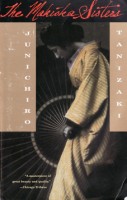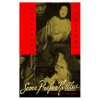kategóriák
- Közlekedés ajánlójegyzék
- Szocreál ajánlójegyzék
- Reklám ajánlójegyzék
- Fotó ajánlójegyzék
- Kínai-japán ajánlójegyzék
- Szentkép ajánlójegyzék
Új árakkal! - Új szentkép ajánlójegyzék II.
- 12 érdekes régiség
 Könyv
Könyv
 Bibliofilia
Bibliofilia
 Régiség
Régiség
 Metszet
Metszet
 Térkép
Térkép
 Fotó
Fotó
 Papírrégiség, Aprónyomtatvány
Papírrégiség, Aprónyomtatvány
 Plakát
Plakát
- Cirkusz
- Modern grafika
- Szocreál
- NER Irodalom
- Egyéb
kosár
üres a kosár
nincs bejelentkezve
Tanizaki Junichirō : The Makioka Sisters
- leírás
- további adatok
In his introduction to Shimazaki Tōson’s The Broken Commandment, translator Kenneth Strong lists Tanizaki’s The Makioka Sisters as one of the five most famous works of Japanese literature in the West (along with Kawabata’s Snow Country, Sōseki’s Kokoro, Abe’s Woman of the Dunes, and Mishima’s Temple of the Golden Pavilion). Strong wrote this essay in 1972, and, since then, I would say that Naomi has replaced The Makioka Sisters as the Tanizaki text that is most frequently taught. The formation of national identity in the pre-war period is a hot topic in Japan-focused scholarship these days, especially when the evils of modernity are represented by a sexy young woman. Regardless, The Makioka Sisters is still an excellent novel.
As the English title suggests, the novel is about four sisters who live in a suburb of Osaka. Tsuruko and Sachiko, the two older sisters, are married, but the two younger sisters, Yukiko and Taeko, are not, and therein lies the main conflict of the novel. Eldest sister Tsuruko moves to Tokyo after her husband gets transferred, so the task of marrying off third sister Yukiko falls to second sister Sachiko and her (Tanizaki stand-in) husband Teinosuke, who remain in Osaka. The problem is that they can’t find a suitable husband for the shy traditional beauty, who has entered her thirties under the shadow of rebellious youngest sister Taeko, who cares nothing for the family’s reputation.
After Tsuruko and her family move to Tokyo, they all but disappear from the story, which is fine, since the author has more than enough material to work with concerning the three sisters who stay behind. Each of the three is an interesting and fully developed personality in her own right, and they have plenty of floods, illnesses, and secret love affairs to keep them busy. Taeko especially falls into the role of Tanizaki’s trademark femme fatale, with her modern clothing, flirtatious attitude, lies, ridiculous expenditures, and so on. Although the reader can’t help but share her sisters’ attitude of frustration towards her, Taeko adds spice to the novel and generally drives the plot forward.
Not that the novel has much of a plot. Nothing grand happens, no one important dies, no major secrets are revealed, and all conflicts are eventually resolved to everyone’s satisfaction. Instead of focusing on dramatic action, Tanizaki has instead created a world within his novel and invited the reader to visit it for five hundred pages. Although I wasn’t able to read the book for long stretches at a time, I was happy with its length and would have even been happy if it were longer. Even though the story takes place during the opening years of the Pacific War, the characters occupy a comfortable environment rich with detail, culture, and tradition. In other words, this is a novel not to be enjoyed for its forward impetus but rather for its description of a family outing to Kyoto to see the cherry blossoms. Any fan of traditional Japanese culture, and especially the tension between tradition and the modern lifestyle, should enjoy this novel – there’s a reason why an earlier generation of Japan scholars considered The Makioka Sisters to be one the defining works of modern Japanese literature.
| állapot: |     |
| kategória: | Könyv > Idegennyelvű könyvek > Angol nyelvű > Angol nyelvű irodalom > |
| kiadó: | Vintage International, 1995 |
| cikkszám / ISBN: | 9780679761648 |
| kötés: | fűzve |
| oldalszám: | 530 |
| könyv nyelve: | angol |










 Telefon:
Telefon: E-mail:
E-mail:







